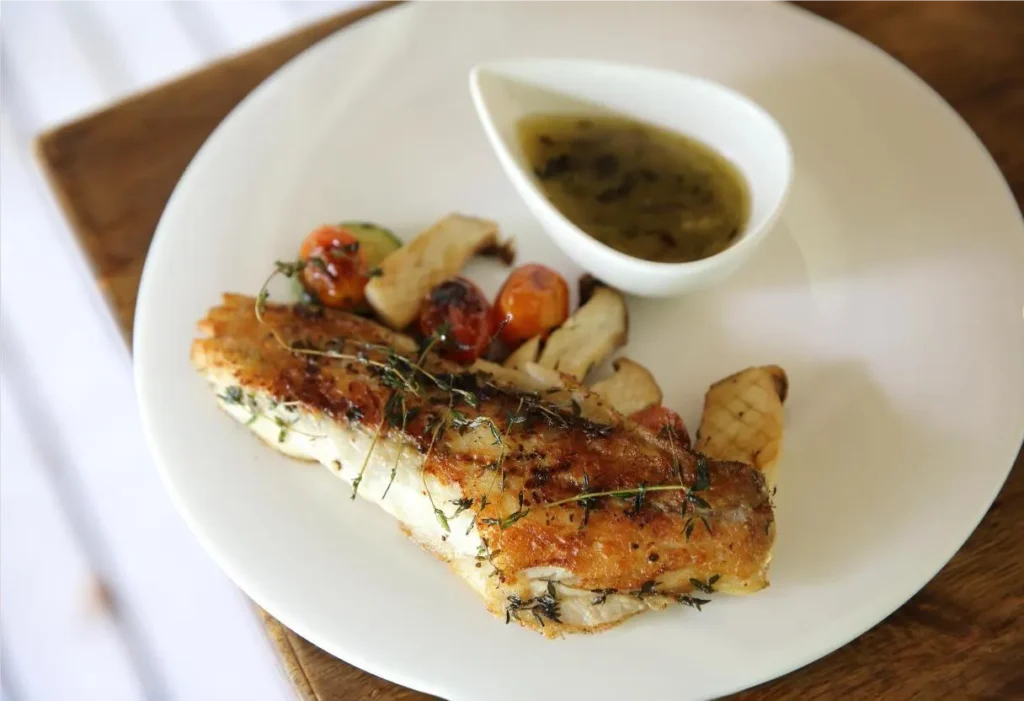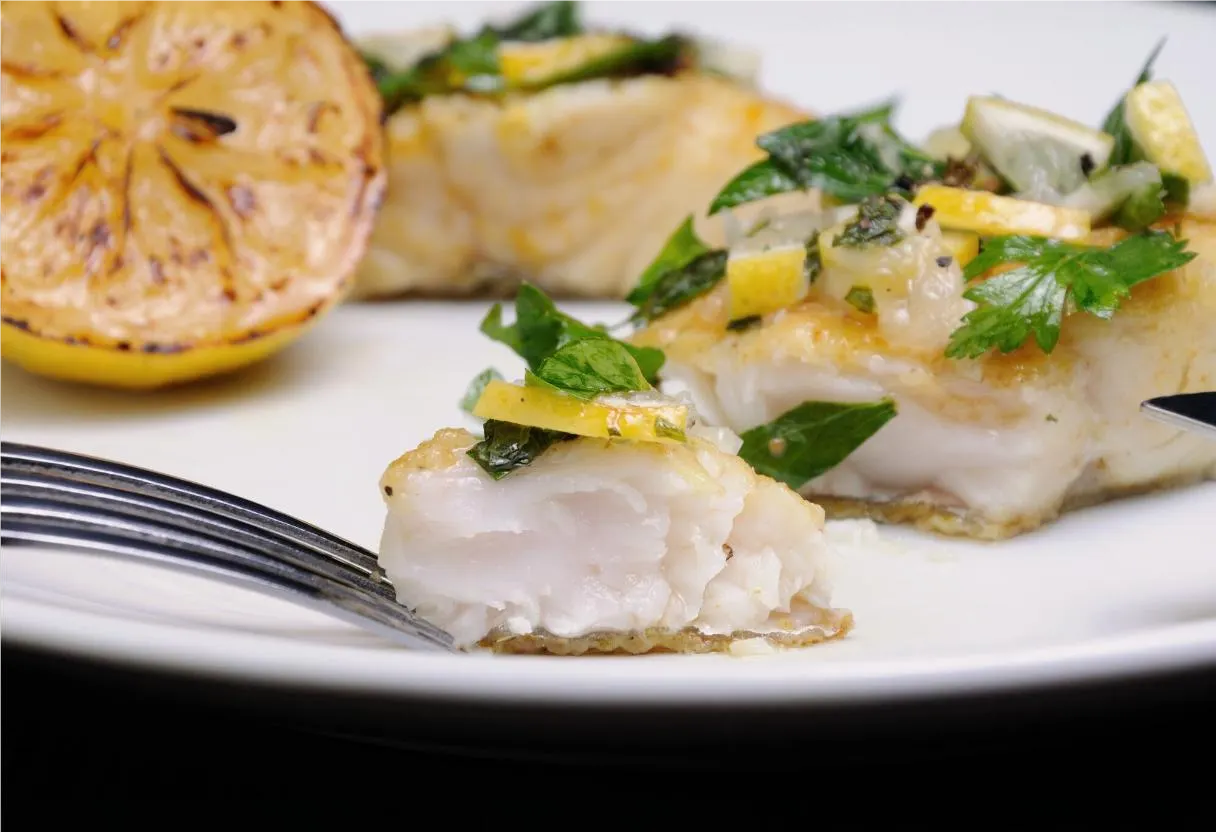Discover mouthwatering rockfish recipes that are easy to prepare and perfect for any meal.
Introduction
Rockfish, a versatile and flavorful fish, has been a staple in culinary dishes across the United States. Whether you’re a seasoned chef or a home cook, rockfish offers a delightful taste and texture that can elevate any meal. This comprehensive guide delves into everything you need to know about rockfish, from selecting the freshest fillets to preparing delectable recipes that your family will love. Additionally, learn about sustainable sourcing practices to ensure your seafood choices are both delicious and environmentally responsible. By the end of this article, you’ll be equipped with the knowledge and recipes to confidently incorporate rockfish into your regular meal planning.
Understanding Rockfish
What is Rockfish?
Rockfish refers to a group of fish species belonging to the genus Sebastes. These fish are predominantly found in the Pacific Ocean, particularly along the western coast of North America. Rockfish are known for their firm texture and mild flavor, making them a favorite among seafood enthusiasts. Their adaptability in various cooking methods—from baking and grilling to stewing—makes them a versatile ingredient in numerous dishes.
Species Varieties
There are over 100 species of rockfish, each varying in size, color, and habitat. Common varieties include the black rockfish, yelloweye rockfish, and bocaccio. Each species offers unique culinary experiences, but all share the characteristic firm flesh that holds up well in various cooking methods. For example, black rockfish are prized for their rich flavor and are often used in more robust dishes, while yelloweye rockfish have a slightly sweeter taste, making them ideal for lighter preparations.
Habitat and Sustainability
Rockfish primarily inhabit rocky reefs and kelp forests, which provide shelter and abundant food sources. Due to their slow growth and late maturity, many rockfish species are vulnerable to overfishing. Therefore, it’s crucial to choose sustainably sourced rockfish to ensure the preservation of these populations for future generations. Sustainable fishing practices help maintain the balance of marine ecosystems and ensure that rockfish remain a viable option for both commercial and recreational fishing. For more insights on sustainable seafood choices, check out our comprehensive comparison of Is King Salmon Better Than Regular Salmon? A Comprehensive Comparison.
Nutritional Benefits of Rockfish
Rockfish is not only delicious but also packed with essential nutrients that contribute to a healthy diet.
Essential Nutrients
A 100g serving of rockfish provides approximately:
- Calories: 100 kcal
- Protein: 20g
- Fat: 2g
- Omega-3 Fatty Acids: 500mg
- Vitamins: B12, D
- Minerals: Selenium, Phosphorus
These nutrients make rockfish an excellent choice for those looking to maintain a balanced diet. The high protein content supports muscle development and repair, while the low-fat profile makes it suitable for various dietary preferences. Additionally, the presence of essential vitamins and minerals contributes to overall health and well-being.
Health Benefits
Consuming rockfish can support heart health due to its high omega-3 fatty acid content. These fatty acids are known to reduce inflammation, lower blood pressure, and decrease the risk of heart disease. Additionally, rockfish aids in muscle development and repair, thanks to its rich protein profile. The vitamins and minerals in rockfish also contribute to bone health and immune system support. Vitamin B12 is essential for nerve function and the production of DNA, while vitamin D plays a crucial role in calcium absorption and bone strength.
Selecting and Preparing Rockfish

How to Choose Fresh Rockfish
Selecting the freshest rockfish is crucial for the best flavor and texture in your dishes.
Signs of Freshness
When choosing rockfish, look for firm, shiny flesh with a mild oceanic scent. The eyes should be clear and not cloudy, and the gills should be bright red. Avoid any fish with a strong fishy odor or discolored spots. Fresh rockfish should have moist, not slimy, skin and should spring back when pressed gently with a finger. These indicators ensure that the fish is fresh and safe to eat.
Sustainable Sourcing Tips
Opt for rockfish that are labeled as sustainably sourced or certified by organizations like the Marine Stewardship Council (MSC). Purchasing from reputable seafood markets ensures that you’re supporting sustainable fishing practices. Additionally, ask your fishmonger about the source of the rockfish and choose options that are locally sourced to reduce the environmental impact associated with transportation.
Preparing Rockfish for Cooking
Proper preparation enhances the taste and ensures a delightful dining experience.
Cleaning and Filleting
To start, begin by rinsing the rockfish under cold water. Next, use a sharp fillet knife to remove the head and tail. Then, make a shallow cut along the backbone and carefully fillet the fish, ensuring to remove any remaining bones with tweezers. Furthermore, filleting rockfish requires precision to maintain the integrity of the flesh, so take your time during this step for the best results. Therefore, practice makes perfect, so take your time to ensure clean, bone-free fillets.
Removing Skin and Bones
Depending on the recipe, you may choose to leave the skin on for added flavor and texture. To remove the skin, place the fillet skin-side down and gently slide the knife between the skin and flesh. Ensure all bones are removed to prevent any unpleasant surprises while eating. For those who prefer skinless fish, this step is essential, especially for recipes that involve delicate sauces or require a smooth texture.
Popular Rockfish Cooking Methods
Rockfish is incredibly versatile and can be cooked using various methods to suit different tastes and occasions.
Baking Rockfish
Basic Baking Techniques
Baking rockfish is a simple and healthy way to prepare this delicious fish. Preheat your oven to 375°F (190°C). Place the fillets in a baking dish, drizzle with olive oil, and season with salt, pepper, and your favorite herbs. Baking allows the fish to cook evenly while retaining its moisture, resulting in tender and flavorful fillets.
Flavor Pairings for Baking
Enhance the flavor by adding lemon slices, garlic, and fresh herbs like parsley or dill. Vegetables such as cherry tomatoes and asparagus can be added to the dish for a complete meal. Lemon not only adds a bright, tangy flavor but also helps to tenderize the fish, making each bite juicy and succulent. Herbs infuse the fish with aromatic notes that complement its natural taste. Furthermore, for a more robust flavor profile, consider adding a splash of white wine or a touch of honey to balance the acidity.
Grilling Rockfish
Tricks
Grilling rockfish imparts a smoky flavor that complements its mild taste. Preheat the grill to medium-high heat and lightly oil the grates to prevent sticking. Grill the fillets for about 4-5 minutes per side, depending on thickness. Additionally, using a grill basket or foil can help keep the fillets intact and make flipping easier. Moreover, avoid overcooking, as rockfish can become dry if left on the grill for too long.
Marinades and Seasonings
Marinate the rockfish in a mixture of olive oil, lemon juice, garlic, and herbs for at least 30 minutes before grilling. This not only adds flavor but also keeps the fish moist during cooking. A good marinade can infuse the rockfish with layers of flavor, making each bite more enjoyable. Therefore, experiment with different herbs and spices to find your favorite combination. For instance, a cilantro-lime marinade can add a fresh, zesty kick, while a soy-ginger marinade offers an Asian-inspired twist.
Pan-Seared Rockfish
Step-by-Step Pan-Seared Recipe
- Ingredients:
- 2 rockfish fillets
- Salt and pepper to taste
- 2 tablespoons olive oil
- 1 tablespoon butter
- 2 cloves garlic, minced
- Fresh herbs (thyme or rosemary)
- Instructions:
- Season the fillets with salt and pepper.
- Heat olive oil in a skillet over medium-high heat.
- Add the fillets, skin-side down, and cook for 3-4 minutes until golden brown.
- Flip the fillets, add butter, garlic, and herbs to the pan.
- Baste the fish with the melted butter and cook for an additional 2-3 minutes.
- Remove from heat and serve immediately.
Enhancing Flavor with Herbs
Using fresh herbs like thyme, rosemary, or parsley can elevate the flavor of pan-seared rockfish. Additionally, adding a splash of lemon juice towards the end of cooking brightens the dish and complements the rich flavors. Fresh herbs not only enhance the taste but also add a vibrant color to the presentation, making the dish more appealing. Furthermore, consider adding a sprinkle of crushed red pepper flakes for a subtle heat that contrasts nicely with the fish’s mildness.
Delicious Rockfish Recipes
Explore these mouthwatering recipes that showcase the versatility of rockfish.
Lemon Herb Rockfish
Ingredients
- 4 rockfish fillets
- 2 tablespoons olive oil
- 3 cloves garlic, minced
- 1 lemon, sliced
- 2 tablespoons fresh parsley, chopped
- Salt and pepper to taste
Step-by-Step Instructions
- Preheat Oven:
- Preheat your oven to 375°F (190°C).
- Prepare Fillets:
- Place the rockfish fillets in a baking dish.
- Seasoning:
- Drizzle olive oil over the fillets and sprinkle with minced garlic.
- Season with salt and pepper to taste.
- Add Lemon:
- Arrange lemon slices on top of each fillet.
- Add Parsley:
- Sprinkle fresh parsley over the fish.
- Bake:
- Bake for 20-25 minutes or until the fish flakes easily with a fork.
- Serve:
- Serve hot with your favorite side dish.
Nutritional Information (per 100g)
| Nutrient | Amount |
|---|---|
| Calories | 100 kcal |
| Protein | 20g |
| Fat | 2g |
| Omega-3 Fatty Acids | 500mg |
| Vitamin B12 | 3.1µg |
| Vitamin D | 10µg |
| Selenium | 30µg |
| Phosphorus | 200mg |
Spicy Rockfish Tacos

Ingredients
- 2 rockfish fillets
- 1 tablespoon chili powder
- 1 teaspoon cumin
- 1/2 teaspoon paprika
- Salt and pepper to taste
- 2 tablespoons olive oil
- 8 small tortillas
- 1 cup shredded cabbage
- 1/2 cup salsa
- 1 avocado, sliced
- Fresh cilantro for garnish
Step-by-Step Instructions
- Prepare Spice Mix:
- In a small bowl, mix chili powder, cumin, paprika, salt, and pepper.
- Season Fillets:
- Rub the spice mixture evenly over the rockfish fillets.
- Heat Skillet:
- Heat olive oil in a skillet over medium-high heat.
- Cook Fish:
- Cook the fillets for 4-5 minutes per side until fully cooked.
- Break into Chunks:
- Remove the fish from the skillet and break into chunks.
- Warm Tortillas:
- Warm the tortillas in the skillet or microwave.
- Assemble Tacos:
- Assemble the tacos by placing fish chunks on each tortilla.
- Top with shredded cabbage, salsa, and avocado slices.
- Garnish and Serve:
- Garnish with fresh cilantro and serve immediately.
Nutritional Information (per 100g)
| Nutrient | Amount |
|---|---|
| Calories | 150 kcal |
| Protein | 18g |
| Fat | 6g |
| Omega-3 Fatty Acids | 400mg |
| Vitamin B12 | 2.5µg |
| Vitamin D | 8µg |
| Selenium | 25µg |
| Phosphorus | 180mg |
Serving Suggestions and Pairings
Rockfish pairs well with a variety of side dishes and beverages, enhancing the overall meal experience.
Side Dishes for Rockfish
Vegetable Pairings
Serve rockfish with steamed or roasted vegetables like asparagus, green beans, or Brussels sprouts. These add color, texture, and essential nutrients to your meal. Additionally, incorporating a mix of colorful vegetables can make the dish more visually appealing and nutritionally balanced. For instance, roasted cherry tomatoes and sautéed spinach not only complement the fish’s mild flavor but also provide a vibrant contrast on the plate.
Grain and Starch Options
Complement your rockfish with grains such as quinoa, rice, or couscous. Potatoes, whether mashed, roasted, or in a salad, also make excellent side options. For a heartier meal, consider adding a side of wild rice pilaf or garlic mashed potatoes, which pair well with the mild flavor of rockfish. Additionally, a light herb-infused risotto can provide a creamy texture that balances the fish’s firmness. For a perfect side dish recommendation, explore our Ultimate Guide to Mashed Potatoes & Gravy, which pairs beautifully with rockfish.
Beverage Pairings
Non-Alcoholic Options
Pair rockfish with refreshing beverages like sparkling water with lemon, iced tea, or a citrus-infused mocktail to balance the flavors. Additionally, a chilled glass of lemonade or a sparkling citrus drink can further enhance the meal without overpowering the delicate taste of the fish. Moreover, these drink options complement the light and fresh profile of the dish, making the dining experience even more enjoyable. Additionally, a cucumber-infused water or a minty herbal iced tea can provide a cooling contrast to the warm, savory flavors of the dish.
Complementary Flavors
Opt for beverages that highlight the fish’s mild flavor, such as a light herbal tea or a citrus-based drink, enhancing the overall taste profile of the meal. For instance, a lemon herb tea can complement the flavors in a baked rockfish dish, while a cucumber-infused water can provide a refreshing contrast. Furthermore, a ginger-lime soda can add a zesty kick that elevates the dining experience.
Frequently Asked Questions (FAQ)
What is the best way to use rockfish?
The best way to use rockfish depends on your preference, but popular methods include baking, grilling, and pan-searing. These techniques preserve the fish’s firm texture and mild flavor, making it versatile for various recipes. Additionally, rockfish can be used in stews, tacos, and salads, offering endless culinary possibilities.
Is rockfish good eating fish?
Yes, rockfish is an excellent eating fish. Not only does it have a firm, flaky texture, but it also offers a mild, sweet flavor that appeals to a wide range of palates. Furthermore, its versatility in cooking methods makes it a favorite in many kitchens. Moreover, its nutritional profile makes it a healthy choice for those looking to incorporate more seafood into their diet.
What does rockfish taste like?
Rockfish has a mild, slightly sweet flavor with a firm, flaky texture. Moreover, its taste is delicate, which makes it suitable for various seasoning and preparation styles without overpowering other ingredients. Furthermore, this subtle flavor allows it to easily absorb the flavors of marinades and spices, thereby making it highly adaptable in different recipes.
Do you leave skin on rockfish?
Leaving the skin on rockfish is optional and depends on the cooking method and personal preference. Keeping the skin can add extra flavor and help retain moisture during cooking, especially when grilling or baking. However, for recipes that require a smooth texture or when serving the fish without any skin, it can be easily removed during preparation.
Conclusion
Rockfish is a versatile and nutritious choice for seafood lovers, offering a delicate flavor and firm texture that adapts well to various cooking methods. Whether you’re baking, grilling, or pan-searing, rockfish can be the star of your meal with the right recipes and pairings. Explore the delicious recipes provided, experiment with different seasonings, and enjoy the health benefits that rockfish brings to your table. Additionally, by choosing sustainably sourced rockfish, you contribute to the preservation of marine ecosystems, ensuring that this delightful fish remains available for future generations to enjoy. Embrace the culinary possibilities and make rockfish a regular feature in your kitchen!

